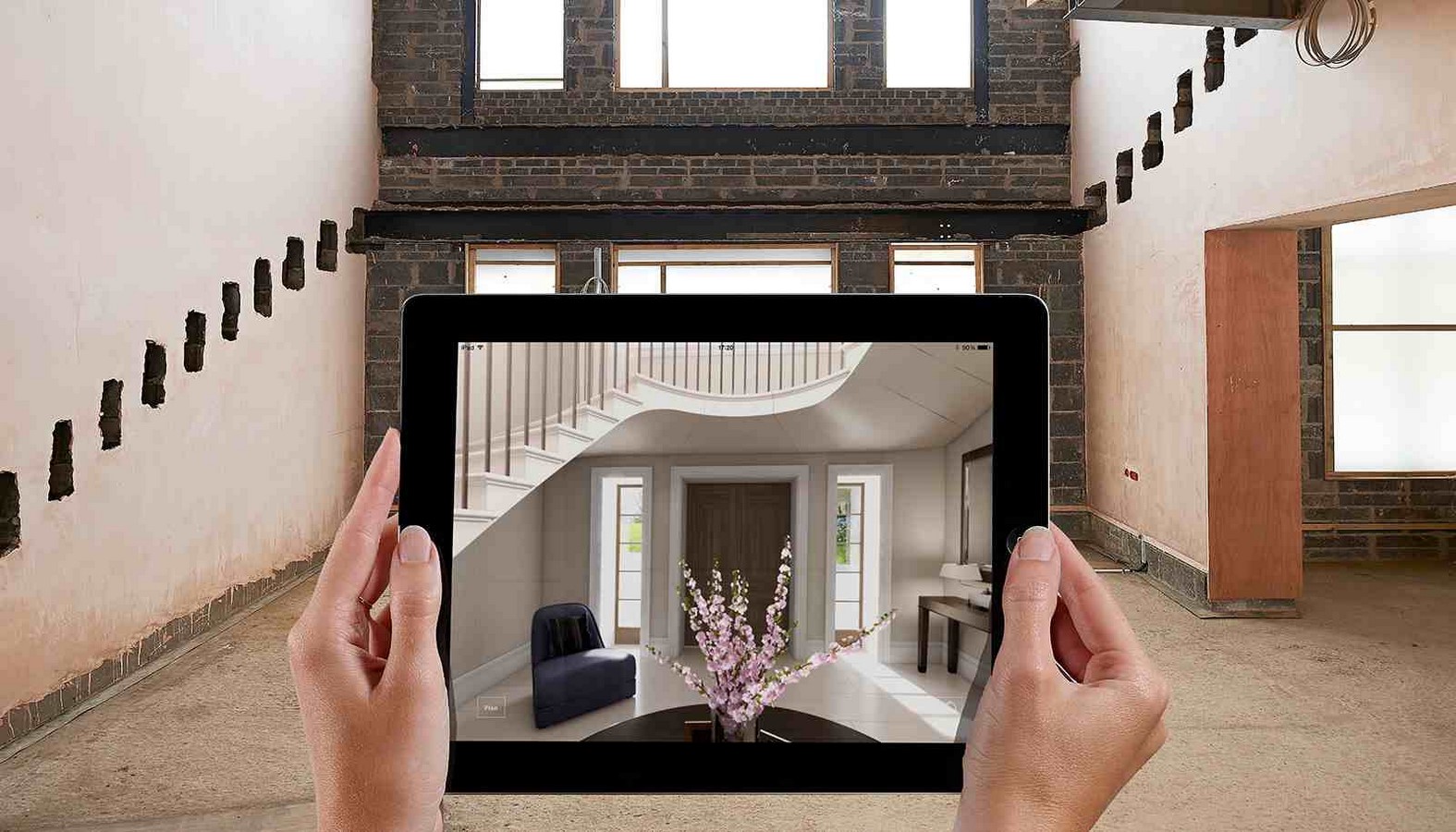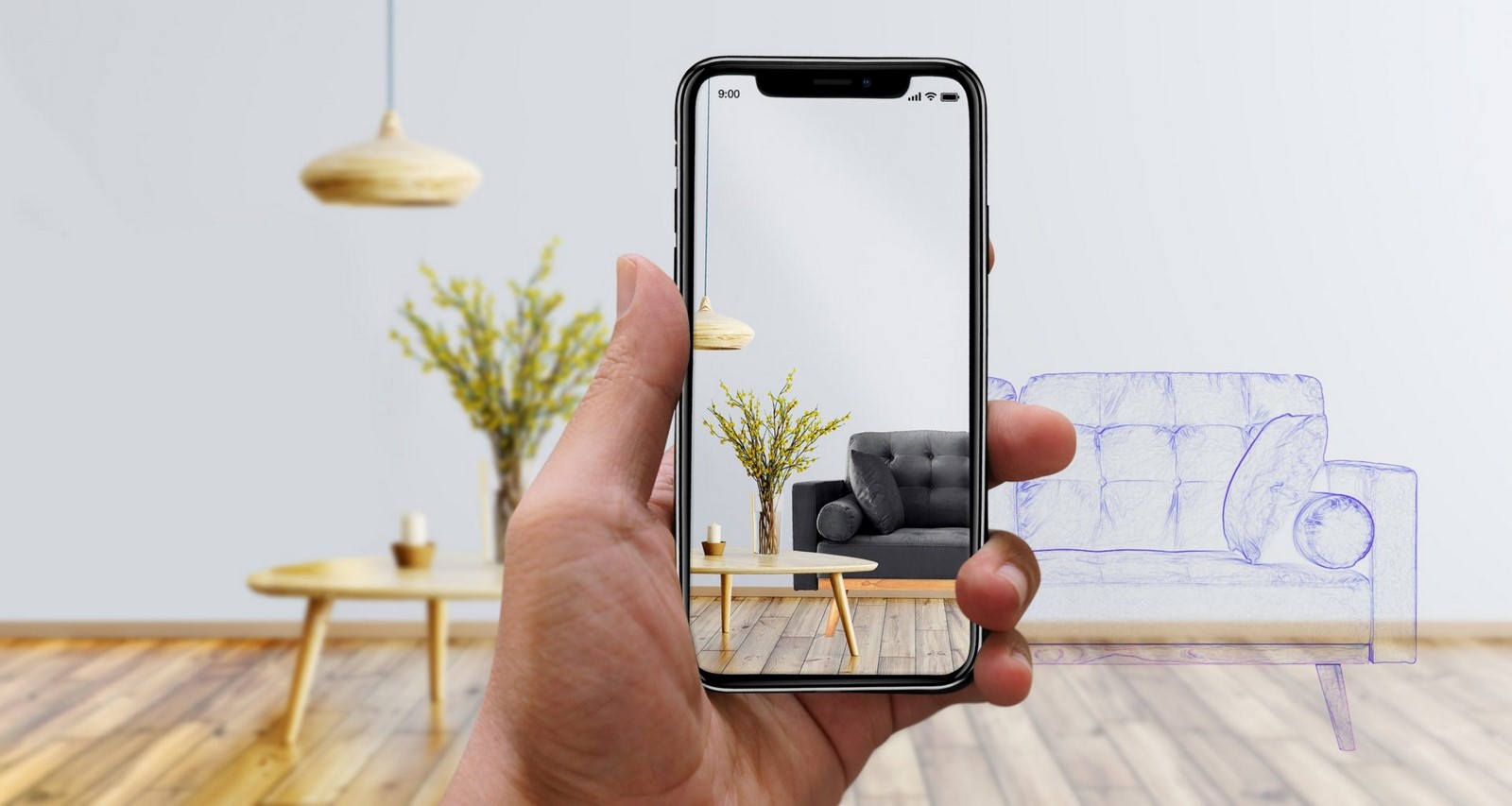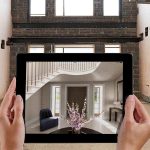Many people have always wanted to build their dream home. A person or a family decides to build their dream home after years of saving, preparation, and labor.
James and Lilly were eager to begin building their new home but were unsure of its layout. With only 2 bathrooms and no room for a washer, the architect’s suggested colors weren’t good. Because of this, the couple’s joy was in vain following their initial encounter with the designer, sending them into a state of illusion.
In the last story, Lilly and James were a couple who were ready to get started on their dream house project. They were taken on a 3D tour of their future house by the architect and interior designer. Instead of paper, the floor plan was shown on a screen. The couple was gazing at a 3D model of their new house!
The world of interior design is being altered by augmented reality.
The revolutionary AR (Augmented Reality) technology allows us to glimpse the other side of the story. The same AR technology is employed in the video game Pokemon Go. When Pokemon fever swept the globe, people went mad collecting their Pokemon. AR is computer-generated material placed in a real-world environment. This technology is already in use in fields such as healthcare, education, real estate, farming, and broadcasting.
“By superimposing features on top of the existing environment, augmented reality interacts with it.”
It might be tough to imagine a piece of furniture, the color of the walls, and the floor plan for a new project. Mood boards are out of style. A modern client wants a personalized or personalized service that is suited to their individual needs. The revolutionary answer to the limitations faced by customers and designers in visualizing the actual project like never before is augmented reality in interior design.

Advantages of Augmented Reality in Interior Design for Clients
- Enhanced Visualisation – AR in interior design supports the customer in visualizing the project before it is created. The application of augmented reality in design for interiors allows the user to create the environment precisely how they want it. AR will let customers see a rustic, seaside, or bohemian-style home all at once. All that is needed to edit the user space is a mobile phone or tablet loaded with prototypes.
- Design modifying capabilities – Users will be able to adjust designs and make modifications even if the design is in the final stages. As a result, clients no longer have to be concerned about time-consuming repairs to tangible décor and furniture.
- Improved guidance- Using AR in interior design, a user will be able to instruct the designer in the most effective way possible. Even the most minor details of the design procedure may be shared interactively with AR.
- Locate and test things remotely – Customers may test a variety of products, such as furniture, for their new project for free.
Advantages of AR in interior designing for Designers
- Interactive concept demonstration – Using AR, architects will be able to give their distinctive ideas to customers much more readily. A design concept board may not be satisfactory to clients that have fluctuating wants.
- Improved cooperation – Using AR in interior design would allow the designer to collaborate more effectively with both the architect and the clients. Better design concepts result from greater cooperation between the client, designer, and architect.
- Profitability – An excellent AR visualization for clients can help to accelerate the purchasing and design process while also boosting the likelihood of a successful closing.
- Competitive advantage – Designers can get a competitive advantage by providing their clients with a comprehensive vision and information about their future projects.
- Increased customer retention rate – AR in interior design will assist designers not only in gaining new clients but also in retaining existing ones.
Interior Design with Virtual Reality
You may instantly think of immersive video games or entertainment when you hear the phrases “augmented reality” (AR) or “virtual reality” (VR). However, both of these technologies are being used in interior design to give clients and designers a magnificent, fully visual experience. In the design industry, augmented reality and virtual reality have outlived their novelty. As both technologies enable the collaborative process between architects, interior designers, and customers, they are increasingly becoming vital tools for visualization throughout the design process.
We’ll look at how architects and designers use these fascinating visual technologies to better convey their ideas within their teams and with their clients in the sections that follow. We’ll also discuss how introducing AR and VR into the design process gives architects and designers a competitive advantage.
But, before we get into instances of how designers and architects use these technologies, let’s first explain what they are and how they differ.
What is Augmented Reality?
Augmented reality is a technology that augments the real world with computer-generated information such as pictures, sounds, and text. In most augmented reality applications, and especially when utilized for architectural or interior design, AR adds visual elements to a physical situation. AR is often used with a mobile device, such as a smartphone or tablet. The user can enter a camera-type mode with the help of an AR-enabled app to observe virtual components superimposed over the real-world background.
How Architects and Designers Use Augmented Reality
Augmented reality has many practical applications, and companies like IKEA are at the forefront of using AR to assist their customers visualize their products in space. The IKEA AR software allows users to digitally arrange furniture products from the store’s catalogue into real-world space. This technology allows customers to sample before they buy, which has increased sales for the large-box Swedish retailer.
Others in the design industry, on the other hand, are using augmented reality outside of IKEA’s huge, blue walls. For example, augmented reality (AR) may let clients visualize flat design items in their space, such as paint color, wallpaper, wall art, blinds, curtains, or even flooring materials (such as tile, rugs, and carpets). These AR applications can reduce shock and eliminate buyer’s remorse after installing or applying a product. In her essay The Rise of Augmented Reality in Interior Design and Property Development, author Tatyana Shavel states, “When projects shift from prototyping to construction, AR can be used to enhance or even replace the digital drawings used by fabricators and engineers.” Finally, AR will help to reduce mistakes and omissions in development projects, saving money on building and development firms time and money.”
What is Virtual Reality?
While augmented reality and virtual reality have certain parallels, there are significant differences between the two. Virtual reality is a far more immersive experience.
A user perceives upgrades to their real-world environment when using AR. However, using VR, the program creates a new and immersive environment. A user puts on a headset and is immediately transported to a scene. It can be animated or stitched together from a succession of high-resolution pictures. The user can glance around the space in all directions as if they were standing in that scene.
Although augmented reality may have more promise in the interior design process, both architects and designers use virtual reality technology in unique ways throughout their workflow, from mock-ups to final designs.
Virtual reality has made it simpler for designers to persuade clients to use a certain finish or style. Without a doubt, virtual reality has decreased the amount of back and forth over design decisions. Design teams and other stakeholders can evaluate if a design satisfies expectations or whether particular components should be changed or removed. It isolates uncertainty in the design development phase, allowing design teams to be more flexible during conception and efficient throughout execution.

How Architects and Designers Use Virtual Reality
Architects and designers use 2D drawings to communicate their ideas to their teams and clients. Some people, however, have difficulty interpreting 2D pictures, especially if they lack a reference point. Until recently, many in the design industry attempted to solve this puzzle by developing scaled 3D renderings and architectural models.
While such representations aid in visualization, they are not infallible without immersion. Some folks will struggle to grasp the scale of a space or its furnishings. This is one of the reasons why VR and AR are such fascinating alternatives for designers and architects alike.
Architects utilize virtual reality to bring floor plans and 3D representations to life.
David Alhadeff, the founder of The Future Perfect, says: “A lot of our architecture and interior design clients are taking this idea [of using virtual reality as a selling tool] and bringing it into a hypothetical reality for a space they’re creating for their client, and that seems better to me than in the past where you might have signed off on an idea with a designer based on a drawing.” This gives you a glimpse into your future space.”
How do AR and VR Benefit Interior Designers and Architects?
Should you invest in virtual or augmented reality?
These technologies facilitate stakeholder engagement and the clarification of abstract topics. However, they also improve the way architects and design teams collaborate and interact with their clients.
Tuhin Bhatt writes in his article “Augmented Reality for Interior Design: Key-Value Propositions Paving the Way for a Revolution,” “By simply allowing customers to stay on the same page with the designers, the sellers and designers can garner better satisfaction and ensure better project delivery.” AR-based presentations can allow for better iterations in an ongoing design project, ensuring better results by synchronizing expectations on both ends.”
While there is a learning curve involved in designing augmented or virtual reality apps, employing this technology can ultimately save time and frustration. In the article “What Virtual Reality Brings to Interior Design,” the author remarks that “VR can be a time-saver in the early stages of a project.” Showing clients, a design in this manner might eliminate the need for lengthy explanations as part of a presentation because they can see what you’re talking about.”
VR and AR also offer an advantage over 2D drawings and even 3D renderings. Neither 2D nor 3D can provide the same tactile and emotional experience as augmented or virtual reality.
Final Thoughts
While both virtual and augmented reality are novel and intriguing technology, they are not fads. These technologies are becoming increasingly important in the design business for more successfully communicating a design within a team and with clients. You may use AR and VR in your process to stay competitive and ensure that your clients buy into your ideas.
Reference List
- [Email Protected] (2021) Augmented reality (AR) in Interior designing: Future of interior design, Queppelin. Available at: https://www.queppelin.com/augmented-reality-ar-in-interior-designing/ (Accessed: 04 July 2023).
- Elliott, S. (2022) Vurtual reality in interior design: An introduction, Gather. Available at: https://gatherit.co/how-virtual-reality-is-transforming-interior-design/ (Accessed: 04 July 2023).













